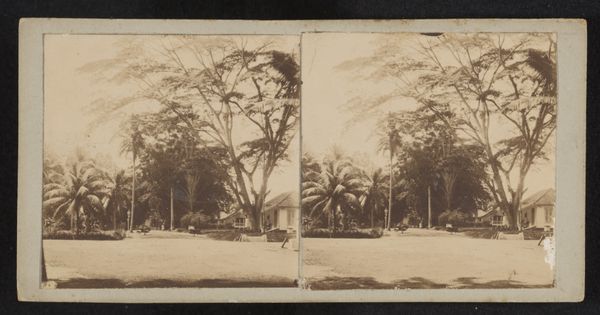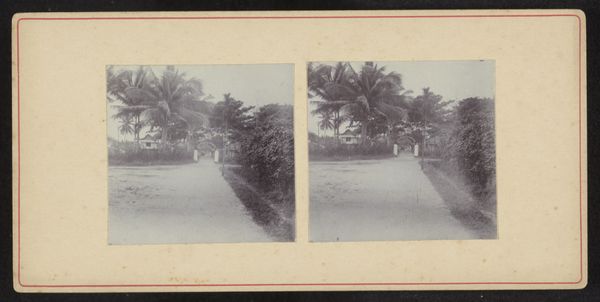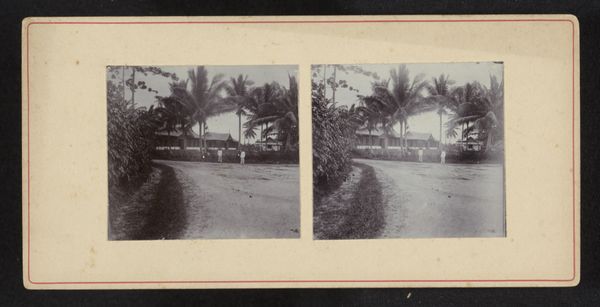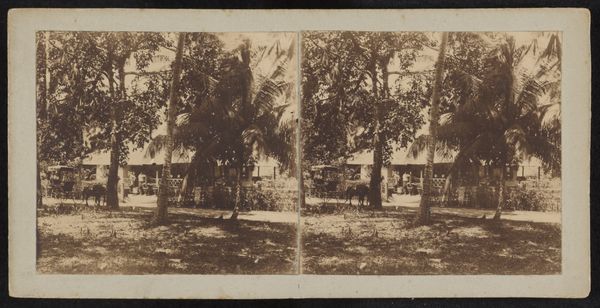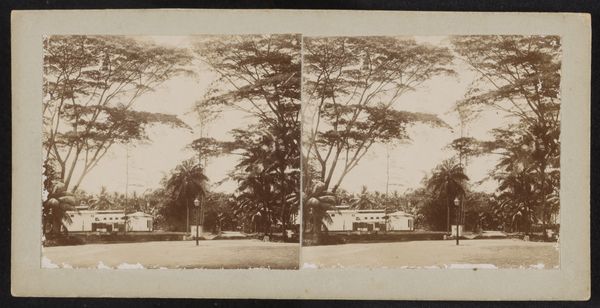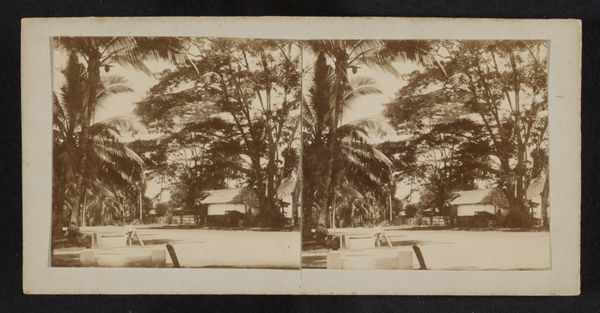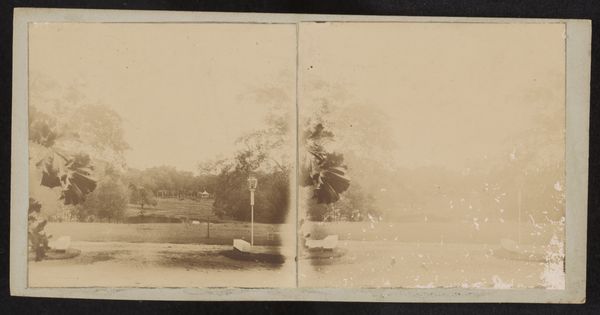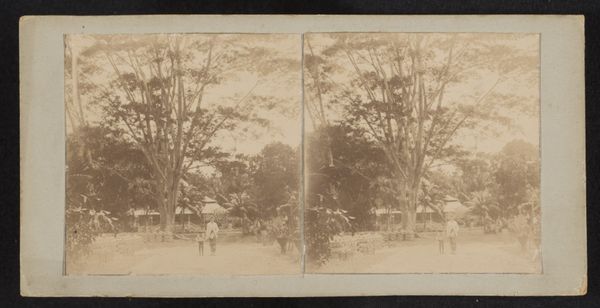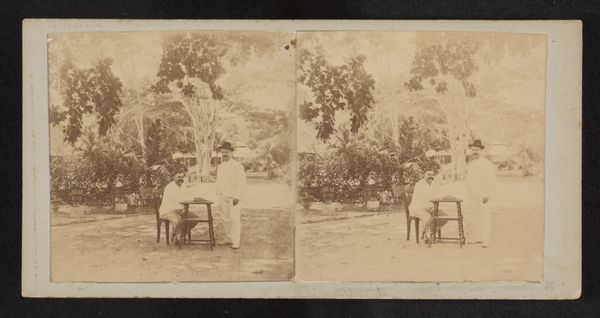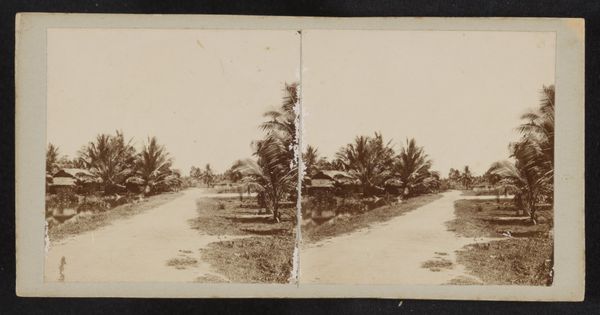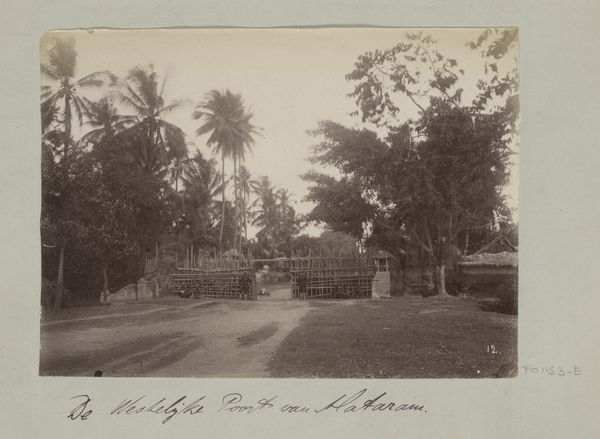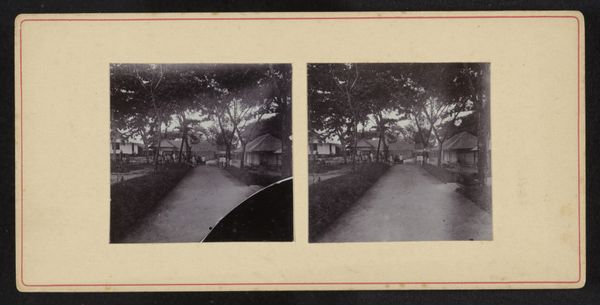
Dimensions: height 80 mm, width 80 mm, height 88 mm, width 178 mm
Copyright: Rijks Museum: Open Domain
Curator: What a beautiful sepia tone. There's a stillness about this landscape, even though we know those ox carts are in motion. Editor: Indeed. This is a stereo card featuring "Ossenwagens op de weg naar Soekaboemi," which translates to "Ox Carts on the Road to Sukabumi," captured sometime between 1900 and 1922 by Robert Julius Boers. Curator: It really draws you into thinking about the pace of life then, a world so different from our own. And the dust, you can almost feel it, rising from the road as the carts make their way. What do you make of this scene depicting Java in the Dutch East Indies through a post-impressionist lens? Editor: Beyond the visual charm, the composition evokes the weight of labor and colonialism. The oxen and the workers on foot pulling what is on the ox carts. It speaks of human and animal subjugation to build roads that would primarily benefit Dutch colonizers to ease moving goods and services. Curator: True, this is an orientalist piece and can hardly be seen outside the exploitation framework; nevertheless, its art form is rooted in impressionism. Consider how Boers utilizes light and shadow, the layering and the tonal gradients that lead the eye through a sense of deep perspective; one almost overlooks the harsh working reality by losing oneself in the landscape aesthetic. The sepia filter gives a melancholic character to the entire work. Editor: Right, the sepia softens the historical realities but, intentionally or not, emphasizes the photographic composition itself. Perhaps Boer's intention wasn't overtly political but aesthetically and romantically inclined towards othering and essentializing local and indigenous lives, culture, and spirituality in the context of foreign exoticism. Curator: Precisely, art is never created in a vacuum. These details emphasize the road, its existence a testament to colonial endeavors, and become the structural anchor, drawing us into these complex dialogues. What do you see in how these photographic landscapes shaped and potentially still shape post-colonial social power dynamics and the racialized and gendered division of labor that still plague Java to this day? Editor: This piece brings these narratives to the surface—a critical tool for decolonizing our ways of seeing. Thank you for lending your voice to better articulate and clarify those views. Curator: Likewise, your attention to technique grounds the broader strokes in a tangible, material reality, a necessary dialogue.
Comments
No comments
Be the first to comment and join the conversation on the ultimate creative platform.
